Whatapp:
+278.3675.0634
Work Hours
Monday to Friday: 7AM - 7PM
Weekend: 10AM - 5PM
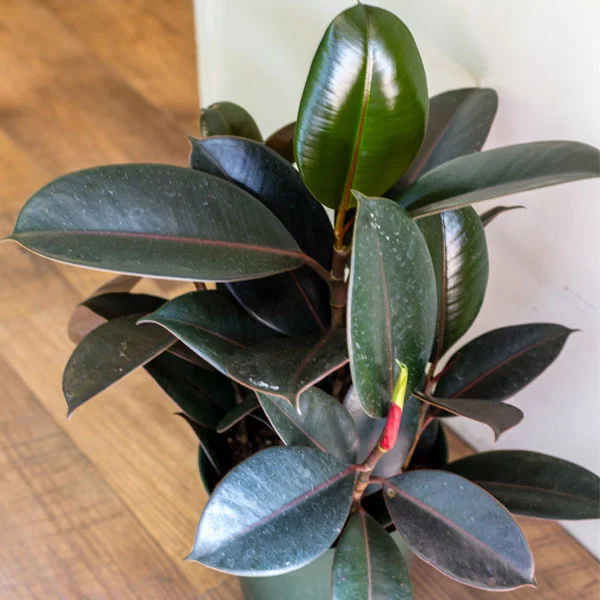
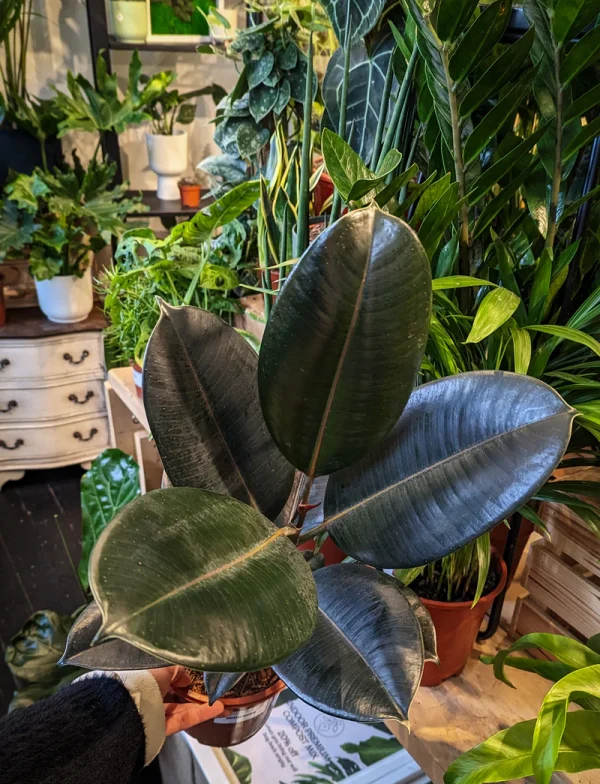
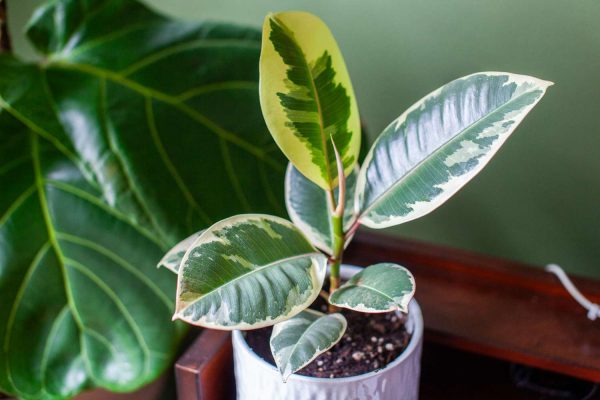
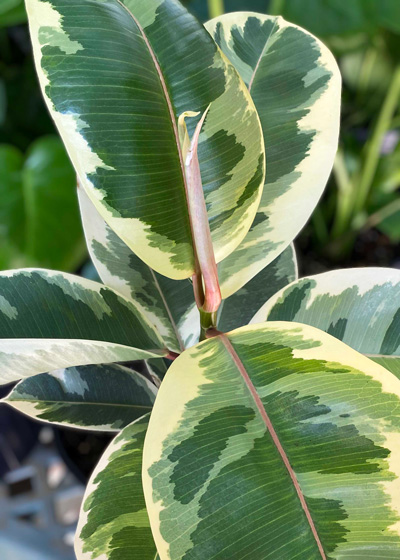
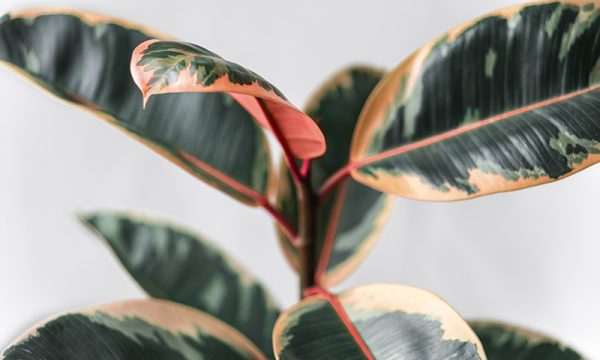
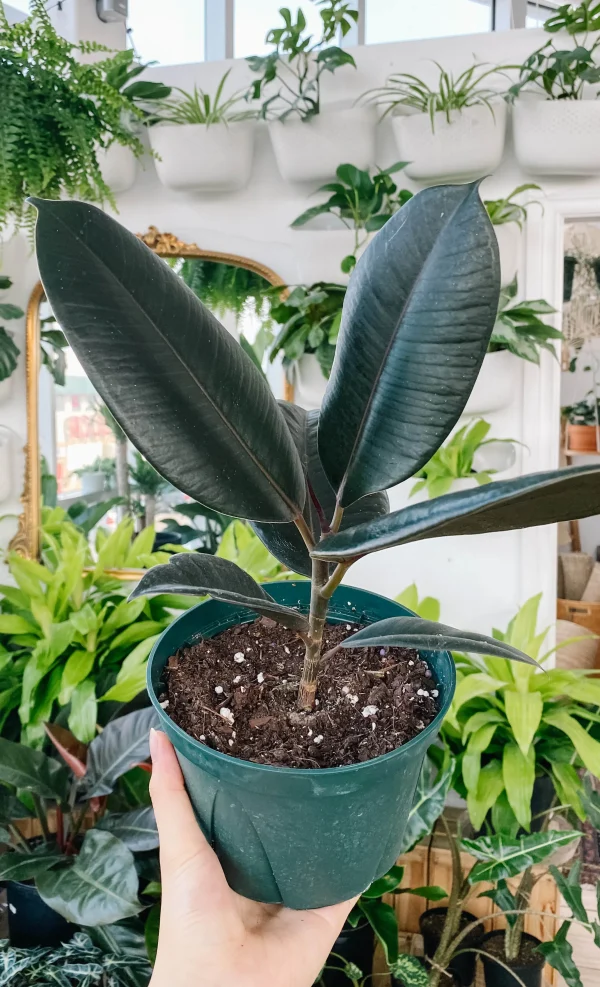
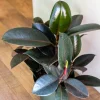





Original price was: $50.00.$30.00Current price is: $30.00.
Rubber plant, scientifically known as Ficus elastica, is a popular houseplant native to South and Southeast Asia.
Ficus elastica
Rubber plant, India rubber plant, rubber tree, rubber fig
Medium to bright light
Fast
In their native tropical habitat, Ficus can reach heights of 50 feet or more. But don’t worry; as houseplants, they rarely grow taller than 10 feet.
Glossy oval-shaped leaves, ranging in size from 5 to over 12 inches long, may be dark green, burgundy, or variegated. Some varieties sport sheathes and midribs in contrasting colors. (Rubber plant)
Ficus leaves and stems secrete a milky latex sap that is toxic when ingested, so keep out of reach of children and pets. Exposure to the sap may also cause skin irritation in sensitive people. See more Common Poisonous Plants for Dogs and Cats.
Be sure to place your Ficus in a brightly lit location, such as near an east- or west-facing window or several feet back from a south-facing window. Variegated varieties will benefit from a few hours of direct sun, which will bring out the best foliage color.
Like its close relative the fiddle-leaf fig, rubber plant loves a warm and humid environment, with temperatures ranging from 60° to 85° F and humidity levels of 40% or higher. Avoid exposing plants to cold drafts or sudden temperature fluctuations. (See more houseplants that like humidity.) (Rubber plant)
Use a well-draining potting mix with some perlite or orchid bark added to improve drainage and aeration.
Plant in a pot about 1 to 2 inches wider than the rootball, with drainage holes to help prevent root rot. To prevent toppling, grow larger rubber trees in a heavy container, or nest a plastic container with drainage holes inside a sturdier one made of clay or ceramic.
If you live in zones 10-12, you can grow Ficus elastica outdoors year-round in a shady location with filtered sunlight. Keep in mind that they can grow 20 to 30 feet tall outdoors and may need regular pruning to keep it compact.
In colder climates, you can move your indoor rubber tree outdoors in summer once the temperatures warm up, making sure to keep it out of direct sunlight. (Placing the pot on a wheeled caddy will allow you to move it more easily.) Bring your plant back indoors in fall when the temperatures dip below 50° F.

Ficus are very particular about their moisture needs and should not be overwatered. Allow the top 2 to 3 inches of soil to dry out between each watering to avoid oversaturation. In winter, when plant growth slows, let the soil go a bit drier. Never allow your rubber tree to sit in standing water. (Rubber plant)
Feed once a month while your plant is actively growing with a liquid houseplant fertilizer diluted to half-strength. You can also add some worm castings to the soil to give your plants a nutritional boost.
If your rubber plant is threatening to outgrow its space, you can keep it in check by pruning the central stem back to a leaf node, which will encourage the growth of side branches. You should also trim off any dead or damaged leaves to keep your plant looking its best and discourage the development of disease. Be sure to wear gloves and long sleeves when handling your plant so you don’t get the milky sap on your skin.
To keep the foliage nice and shiny, wipe it with a damp cloth or sponge as needed to remove dust buildup. Keeping your plant dust-free is good for its health, too, because the leaves will be able to photosynthesize more efficiently. Avoid using leaf shine sprays, which can clog the pores (or stomata).
Rubber plant can shoot up fast under the right conditions and will usually need repotting every 2 or 3 years, or whenever you see the roots begin to grow out of the pot’s drainage holes. The best time to repot is in spring, when your plant emerges from semi-dormancy.
Choose a new container 2 inches larger than the current one and fill it partway with fresh potting mix. Place the top of the plant’s rootball about an inch below the rim and fill in around it with more soil. If your rubber plant has become too unwieldy for repotting, top dress it instead by scooping out the top 2 to 3 inches of soil and replacing it with fresh potting mix.
Tip: If you recently purchased your rubber plant, avoid repotting it for several months to give it time to adjust to its environment. Ficus plants don’t like change and too much stress can cause the leaves to drop.
The easiest method of propagation is by stem cuttings, taken in early spring. Another technique you can try is air layering, which involves rooting a plant stem while it’s still attached to the parent plant. (*See note below on propagating patented plants (check your plant tags for ® or ™ symbols next to the plant name).
Be on the lookout out for common houseplant pests, such as aphids, mealybugs, spider mites, thrips, and scale insects. Rubber plants can also suffer from fungal infections, especially root rot and leaf spot.
Reviews
There are no reviews yet.